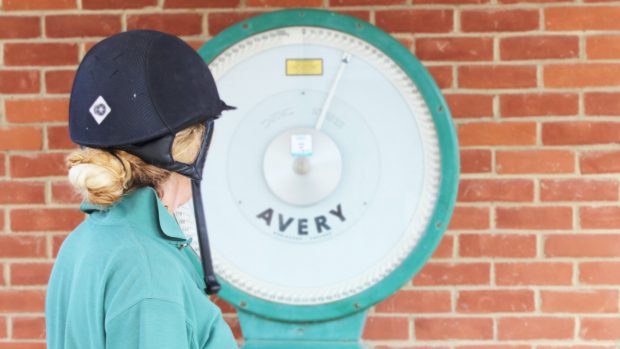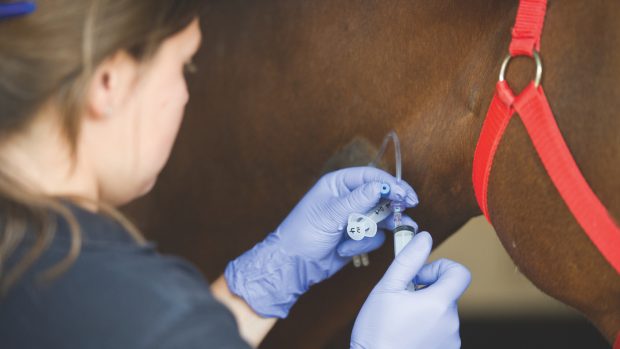New research into sacroiliac (SI) joint region pain in horses has shown that nerve blocking the joint can help pinpoint the source of the pain, while assessing the horse under saddle is also vital.
The research, published last month (20 May), gives guidance for both vets and owners on the clinical signs of SI joint region pain and how best to examine it.
Signs of SI joint region pain include canter quality that is worse than trot, and bucking and kicking out, especially in canter.
A stilted or bunny-hopping type canter, being on the forehand and croup high, changing legs behind, spontaneously breaking from canter to trot and being reluctant to canter were also commonly observed, as well as the tendency to come above the bit.
Benefits of nerve blocking
The study highlighted that for horses showing these signs, blocking the SI joint in a diagnostic investigation could provide crucial answers.
It found that nuclear scintigraphy alone is unreliable for the diagnosis of SI joint pain — only 42% of horses that had a positive response to an SI block and underwent nuclear scintigraphy had abnormal radiopharmaceutical uptake (RU).
However, the use of ultrasonography and scintigraphy in conjunction with an SI block can provide additional information in some horses.
“Assessing the effect of treatment of the SI joints is not an effective method of diagnosis; the use of nerve blocks is much more reliable,” said Dr Sue Dyson.
Importance of ridden assessment
The majority of horses in the study had SI joint region pain and hindlimb lameness.
Although clear improvement in lameness in-hand was seen in some horses after removing the source of pain in the lame limb, ridden exercise highlighted the persistence of another source of pain, which was sometimes worse after abolishing the lameness.
This emphasised the importance of ridden exercise in both trot and canter when assessing lameness and poor performance.
The Animal Health Trust
The study is the first large-scale study of its kind and was conducted at the veterinary charity The Animal Health Trust (AHT) by Dr Sue Dyson, head of clinical orthopaedics at the AHT, and Amy Barstow, a previous AHT intern.
| Popular articles |
The research analysed 295 past cases of horses treated by the charity and builds on previous AHT research that recognised SI joint region pain as a contributor to poor performance and/or hindlimb lameness.
“The Animal Health Trust’s Equine Clinic is experienced in diagnosing and treating SI joint region pain in horses and offers a fully comprehensive referral service,” said a spokesman for the AHT.
“If you are concerned that your horse is showing signs suggestive of SI joint region pain, speak to your vet and ask for a referral.”




